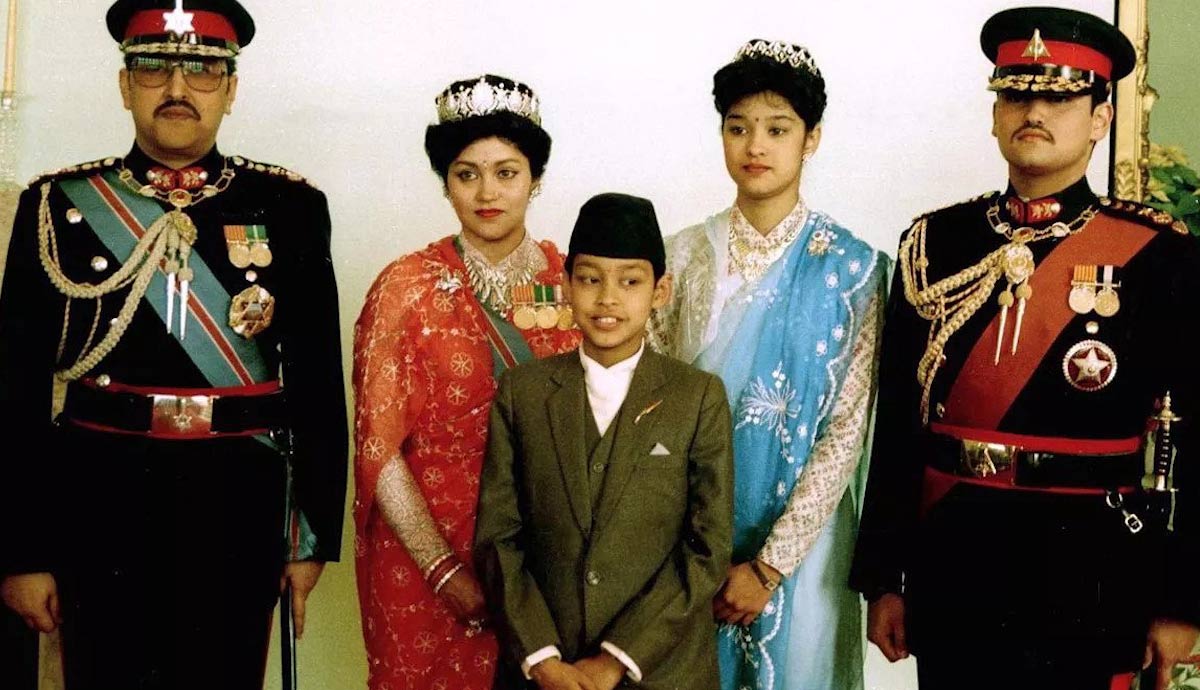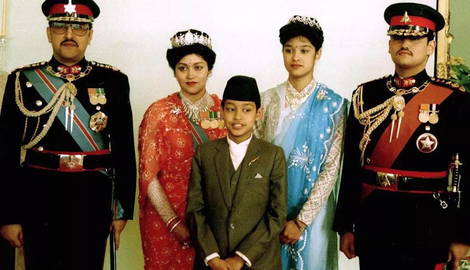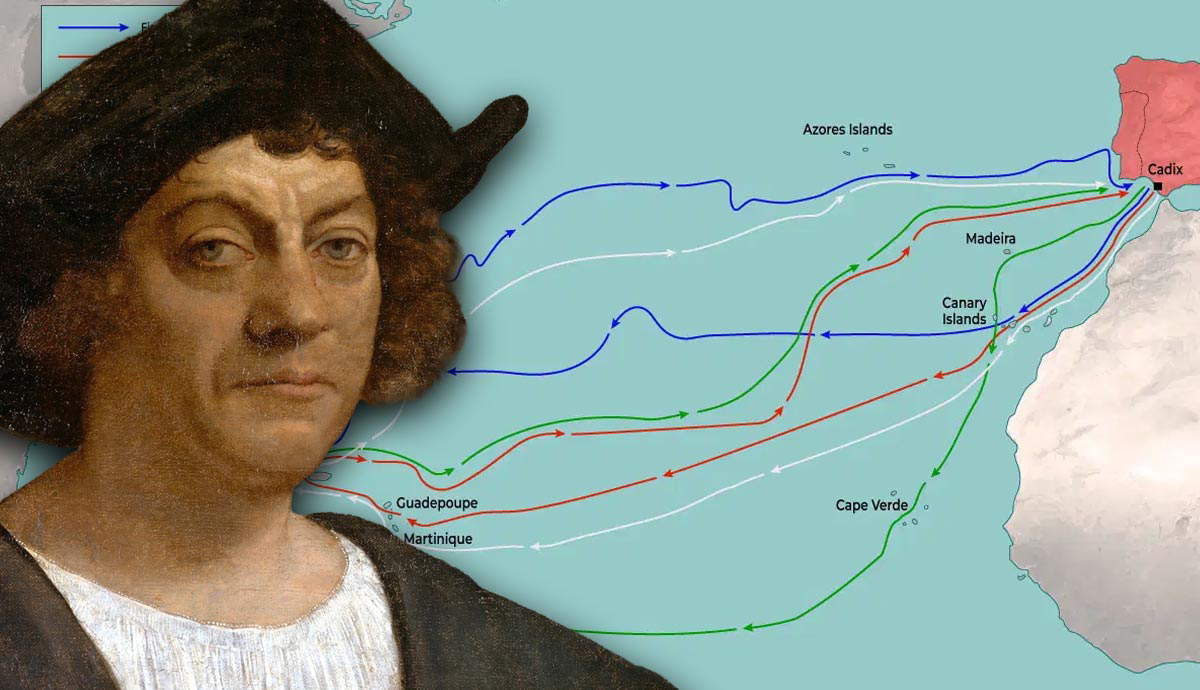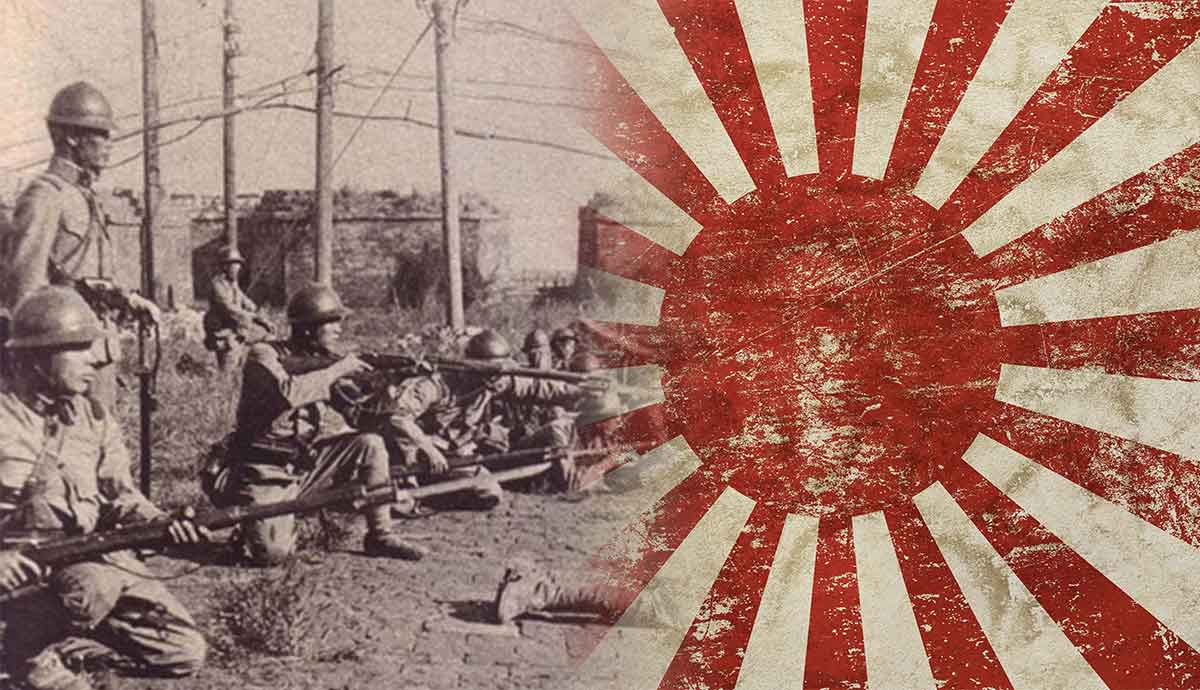
The Nepalese royal family’s regular Friday evening dinner party ended in a tragedy on June 1, 2001, that changed the royal family and the country of Nepal forever. Crown Prince Dipendra of Nepal opened fire on his parents, siblings, and other relatives, killing nine and wounding four. The Nepalese royal massacre was the worst mass killing of royalty since Russia in 1918. What might have driven Crown Prince Dipendra to commit such a heinous act? Was the Nepalese monarchy able to survive such a destructive act? Read more to find out.
Friday, June 1, 2001: The Nepalese Royal Massacre

On Friday, June 1, 2001, the Nepalese royal family gathered for a family dinner party, which they usually did twice a month on Fridays. Present at the dinner were the king and queen, Birendra and Aishwarya, and their three children, Crown Prince Dipendra, Princess Sruti, and Prince Nirajan. Also present were the king’s youngest brother with his wife and children, the king’s three sisters and one brother-in-law, Princess Sruti’s husband, and two of the king’s first cousins. The king’s next younger brother, Prince Gyanendra, wasn’t there, but his wife, three daughters, and son-in-law were also in attendance.
Witnesses later stated that Crown Prince Dipendra turned up at the family dinner drunk on Famous Grouse whiskey and openly smoking a cannabis cigarette. After picking a fight with another guest, Crown Prince Dipendra was escorted back to his chambers by his younger brother Prince Nirajan and another guest.
From his bedroom, Dipendra phoned his girlfriend, Devyani Rana, three times. She later told authorities that Dipendra was slurring his speech but that in the third conversation, he told her that he would go to bed. Instead of going to bed, Dipendra emerged from his bedroom dressed in army fatigues and carrying three guns, one of which was an M16 assault rifle.
A palace aide spotted Dipendra at the top of the stairs but didn’t think anything of it because Dipendra was known for collecting guns. The dinner party was in the billiard room at the Narayanhiti Palace; because it was a private event, no guards were present.

Dipendra first opened fire on his father, the king. On hearing the gunshots, palace aides later said that they tried to break through a glass door to rescue other members of the family. The shooting spree continued, and after killing several other family members, Dipendra went looking for his mother out in the garden. His younger brother Nirajan reportedly pleaded with Dipendra, “Don’t do it, please. Kill me if you want.” Dipendra fatally shot his younger brother and then went on to murder his mother.
After Dipendra had killed nine of his own family members, his uncle stepped forward and purportedly said, “You’ve done enough damage, hand over the gun now.” In response, Dipendra shot and wounded his uncle before turning the gun on himself.
Now King Dipendra, Dipendra was taken to hospital, where he remained in a coma for three days. He never regained consciousness. When he died on June 4, his uncle Gyanendra, who hadn’t been present at the palace that fateful evening, became the last king of Nepal.
In total, Dipendra killed nine family members and wounded four more. While Dipendra was still unconscious, Gyanendra–acting as regent–stated that the deaths were due to an “accidental discharge of an automatic weapon.” Gyanendra later said that he had made this claim due to “legal and constitutional hurdles” because, under the constitution and by tradition, Dipendra couldn’t be charged with murder if he had survived. An investigation into events was carried out, and Dipendra was found responsible for the killings.
Crown Prince Dipendra

The architect of the Nepalese royal massacre, Crown Prince Dipendra, was born on June 27, 1971, seven months before his father became the king of Nepal. While his early education and university education took place in Nepal, he attended Eton College in the United Kingdom during his adolescence. Some said that Dipendra was a well-behaved child, while others said he would throw tantrums and even display sadistic tendencies if his parents didn’t pay attention to him because they were occupied with their royal duties. In 2011, a royal aide of 26 years’ tenure at the palace said, “From the beginning he probably didn’t get the love he should have as a child. That’s what my belief is.”
Dipendra also developed a penchant for guns from an early age. He received his first gun at eight years old and was said to grab guns from soldiers when visiting army training facilities with his father just because he wanted them. While other members of the Nepalese royal family carried weapons on them, Dipendra would leave loaded guns unattended in his chambers as if they were clothes. He practiced shooting for hours a day; palace staff and neighbors grew accustomed to the sound of gunfire.
As a teenager, Dipendra fell in love with his second cousin. His mother rejected the match and sent her son to Eton College in England. While there, he met Devyani Rana, a girl from the wealthiest family in Nepal. For Dipendra, it was love at first sight. However, his family was against the match. Devyani’s great-grandfather had been the last Rana prime minister of Nepal, and her maternal grandmother had been a former Indian royal. There were worries that a marriage could overshadow the Nepalese royal family or even bring it under foreign influence.

Despite her family’s great wealth, Devyani belonged to a lower caste than the Nepalese royal family, which made her unfit to be a future queen. Rumors said that when Devyani’s mother met Queen Aishwarya, the queen was warned that Devyani was used to extreme luxury and that marriage into the Nepalese royal family might reduce her daughter’s standard of living. King Birendra was against the marriage too, and even warned Dipendra that he would be removed as heir apparent if he married Devyani.
By mid-June 2001, with his 30th birthday approaching, Dipendra’s family had been pressuring him to get married. They had chosen two girls for him to marry. Dipendra had had a remarkable military career and was well-liked by the Nepalese public; marriage to the right girl would secure the Nepalese throne.
A news article from late May 2001 questioned why Dipendra was still unmarried and whether his future as heir to the throne was under threat. The article stated that Dipendra was perhaps the first member of the Nepali royalty not to be married as he approached 30. It also held the view that the Nepali people wished to celebrate his marriage “soon and in the grandest manner.”
However, Dipendra had seemingly decided not to get married if he couldn’t marry the woman he loved. This, and a constitutional change that occurred in 1990, are two reasons often attributed to the motivating factors that led to the Nepalese royal massacre.
Nepalese Politics in the 20th Century

In early 1959, Dipendra’s grandfather, King Mahendra, issued a new constitution for Nepal, and the first democratic elections for a national assembly were held. In 1960, he declared the democratic experiment a failure and said that a “partyless” political system would govern Nepal. This system remained in place for thirty years. Mahendra died in 1972, and his son (Dipendra’s father) Birendra became king. Birendra carried out some political reforms in 1980, but these weren’t enough to stifle resentment against the authoritarian regime and the curbs on the freedom of political parties.
In 1989, illegal Nepalese political parties joined to launch a campaign, the People’s Movement, to achieve a multiparty democracy in the country. The government responded by arresting several party leaders and banning all opposition newspapers in February 1990. King Birendra gave a national radio address asking people to stand unified with the monarchy and to pursue democratic reforms through constitutional channels.
The King’s address was not effective. In late February, twelve protestors were killed when police fired on them at a demonstration. Students marched against riot police, and hundreds were arrested. More protestors were killed in early April in the city of Patan, which resulted in a movement of some 200,000 people who marched in protest of the monarchy in the capital, Kathmandu.

Police shot and killed a number of these protestors. At the height of this protest, some police looked on as dissidents smashed government property, including the prime minister’s car and a statue of King Mahendra. On April 8, King Birendra removed the ban on political parties.
The 1990’s People Movement drafted the constitution that came into effect in November 1990. King Birendra was forced to relinquish the responsibility for government decisions. Nepal’s authoritarian monarchy became a constitutional monarchy.
However, these reforms didn’t go far enough, leading to the Nepalese Civil War (1996-2006), which saw the Nepalese royal government opposed by the Communist Party of Nepal (CPN). The CPN employed guerrilla warfare tactics, and this conflict was ongoing at the time of the Nepalese royal massacre.

In addition to being unable to marry the woman he loved, some have suggested that Crown Prince Dipendra was angry at his father for leaving him with a constitutional rather than an authoritarian monarchy to inherit. He may have felt that too much power had been given away following the 1990 People’s Movement, and the Nepalese Civil War showed that the monarchy was unable to restore full stability to Nepal.
The Aftermath of the Nepalese Royal Massacre

On June 2, the victims of the Nepalese royal massacre were given a state funeral and cremated in front of Pashupatinath Temple in Kathmandu. Dipendra’s uncle Gyanendra assumed the throne on June 4. The Nepalese people were in disbelief at the death of their king. They did not believe the “accidental discharge of an automatic weapon” explanation, and some wondered if the new king was behind a conspiracy to kill his brother. Others suspected a government cover-up.
Kathmandu was placed under curfew on June 4. Riots occurred anyway. Three protestors were shot and killed. The following night, a further fourteen were shot and wounded, while 460 were arrested for breaking curfew. On June 12, a Hindu katto ceremony was held to exorcize the spirit of the dead king from Nepal.
A two-person committee comprised of Nepal’s Chief Justice and Speaker of the House carried out a week-long investigation into the massacre, which was released on June 14. The “accidental discharge” version of events was dismissed, and all culpability was attributed to Dipendra.
The single-spaced, six-page synopsis did little to satisfy the skeptical Nepalese public. It lacked details such as toxicology reports, ballistic reports, and autopsy results. What Dipendra had been smoking the night of the murders was described as an “unnamed black substance.” The report also didn’t specify that Dipendra died from suicide. Scotland Yard (the London Metropolitan Police) had offered to assist with the investigation, but this offer was rejected. Many Nepalese found it difficult to believe that Dipendra would kill his parents, and they didn’t trust the official explanation.

King Gyanendra’s reign got off to a bad start. The Nepalese public had none of the goodwill for him that they had had for his older brother. In May 2002, Gyanendra gave his support to the popularly elected Prime Minister Sher Bahadur Deuba when Deuba dismissed the parliament that had been elected in 1999. In October 2002, Gyanendra dismissed Deuba and consolidated governmental power into his own hands. Between 2002 and 2005, Gyanendra chose and dismissed three prime ministers for failure to hold elections and inviting the CPN rebels to roundtable discussions. On February 1, 2005, after Deuba was dismissed for a second time, Gyanendra took over as absolute ruler of Nepal, promising that the country would return to normality within 36 months.
Gyanendra’s style of rule was in direct contrast to his older brother’s. While promising a return to “peace and effective democracy,” dissent was repressed and civil liberties were restricted. In April 2006, the CPN and an alliance of seven other political parties staged protests and strikes in Kathmandu against Gyanendra’s direct rule. From April 5, violent repression of protests, rallies, and marches increased, and by April 24, at least nineteen Nepalese had died, and over one thousand were wounded.

On April 21, the day of a march of hundreds of thousands of protestors in Kathmandu, Gyanendra announced that he would return political control to the people, and he asked the Seven-Party Alliance (SPA) to form a government. The SPA and CPN rejected this offer, saying it did not match their goals. Three days later, on April 24, 2006, Gyanendra reestablished the previously abolished Nepalese Parliament. The SPA accepted this, although the CPN didn’t. However, the Maoist rebels (aligned with the CPN) accepted a three-month truce in the Nepalese Civil War. On May 18, the new Parliament voted to strip King Gyanendra of many of his powers.
Gyanendra clung on to his position as a figurehead for another two years. Over this time, the transitional government took the necessary steps to establish a more permanent government and planned to suspend the monarchy. On May 28, 2008, Nepal declared itself a federal democratic republic, and the Nepalese monarchy was abolished.
The Nepalese royal massacre of 2001 led to the end of the Nepalese monarchy. The majority of the Nepalese people could accept King Birendra as King, but not his brother. The actions of the then-Crown Prince Dipendra resulted in the worst mass killing of royalty since the Romanovs were put to death in Russia in 1918.










